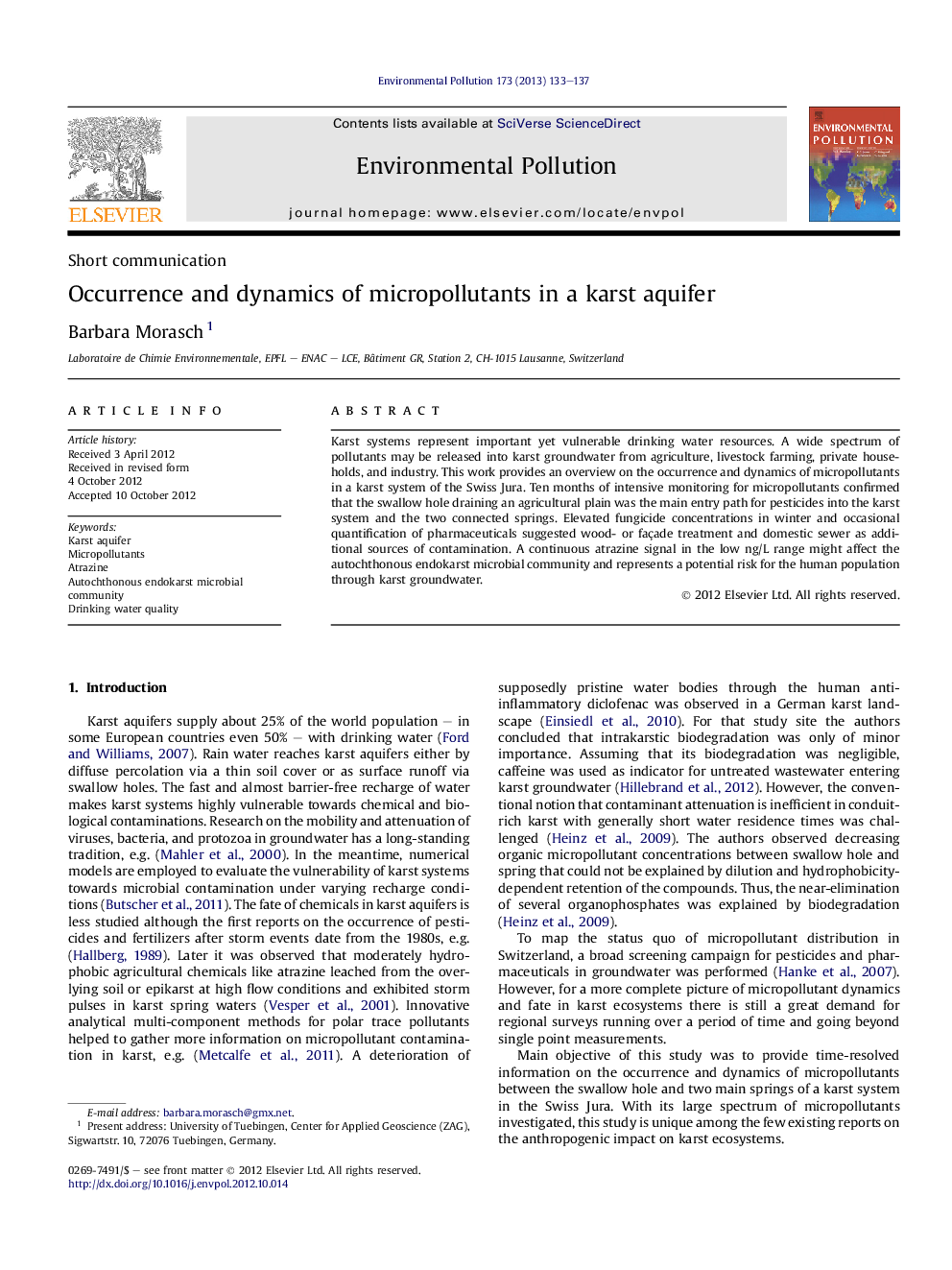| Article ID | Journal | Published Year | Pages | File Type |
|---|---|---|---|---|
| 4424481 | Environmental Pollution | 2013 | 5 Pages |
Karst systems represent important yet vulnerable drinking water resources. A wide spectrum of pollutants may be released into karst groundwater from agriculture, livestock farming, private households, and industry. This work provides an overview on the occurrence and dynamics of micropollutants in a karst system of the Swiss Jura. Ten months of intensive monitoring for micropollutants confirmed that the swallow hole draining an agricultural plain was the main entry path for pesticides into the karst system and the two connected springs. Elevated fungicide concentrations in winter and occasional quantification of pharmaceuticals suggested wood- or façade treatment and domestic sewer as additional sources of contamination. A continuous atrazine signal in the low ng/L range might affect the autochthonous endokarst microbial community and represents a potential risk for the human population through karst groundwater.
► Twenty different pharmaceuticals and pesticides were repeatedly quantified in the karst system. ► A swallow hole draining agricultural land is the major entry path of micropollutants into the karst system. ► Domestic sewer and wood- or façade treatment are likely additional sources of micropollutants. ► Risk of continuous exposure of endokarst microorganisms and human population to atrazine.
